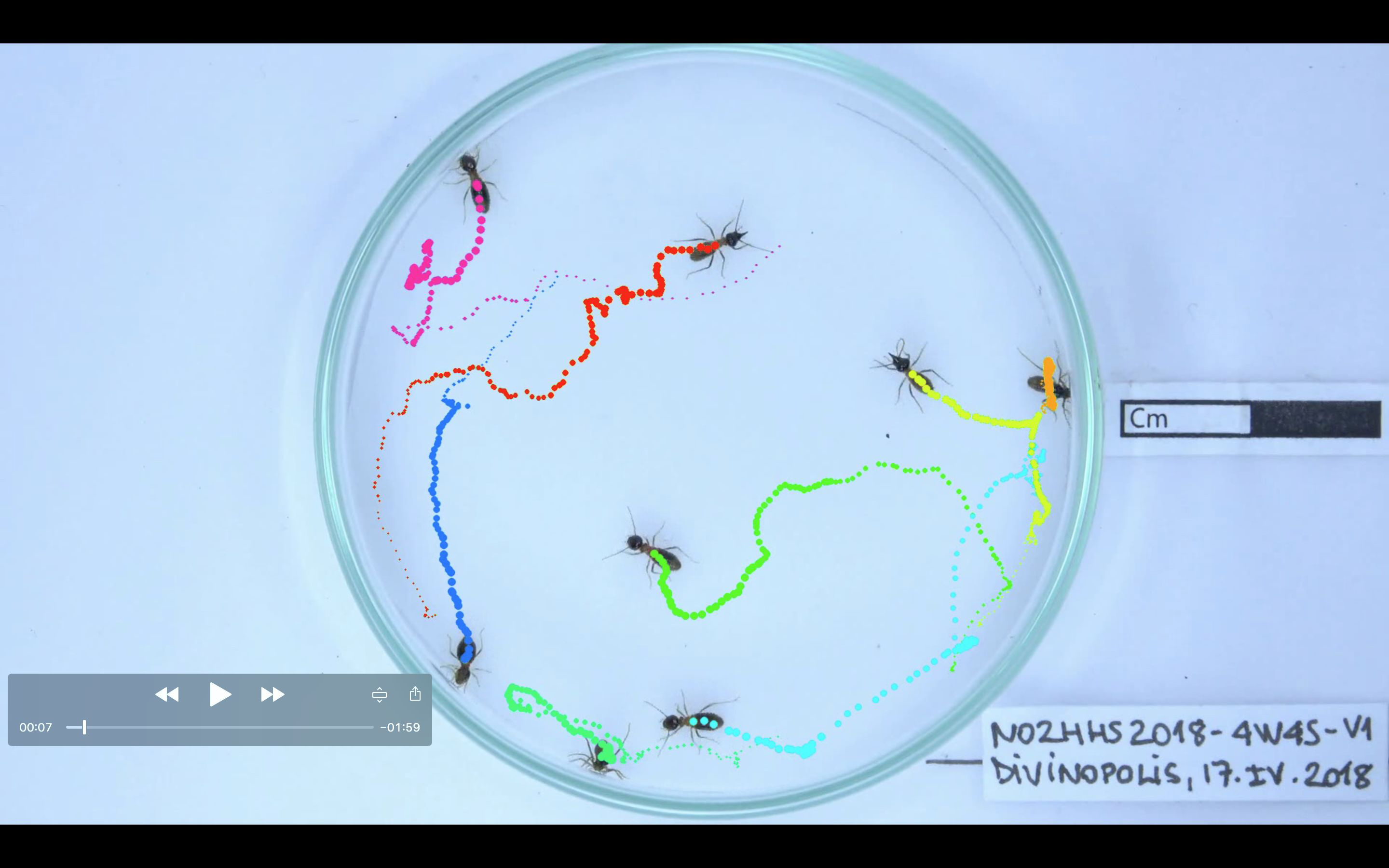
New tracking tool for animal movement and behaviour
Researchers from the University of Konstanz, the Max Planck Institute for Ornithology and the University of Neuchâtel develop a new image-based automated tracking tool for the advanced study of animal movement and behaviour. Tracktor is open access, open source and capable of tracking unmarked organisms in noisy environments.
Automated movement tracking is essential for high‐throughput quantitative analyses of the behaviour and kinematics of organisms. The python-based freeware Tracktor resolves a range of commonly encountered image-based tracking problems in the study of animal movement and behaviour. It was developed by Vivek Hari Sridhar, who is a doctoral researcher at the International Max Planck Research School (IMPRS) for Organismal Biology and the University of Konstanz’s Cluster of Excellence “Centre for the Advanced Study of Collective Behaviour”. Input on useful features and on which statistics to compute for commonly encountered problems was provided by the experimental biologists Dr Simon Gingins (University of Konstanz, Cluster of Excellence “Centre for the Advanced Study of Collective Behaviour”, Max Planck Institute for Ornithology) and Dr Dominique Roche (formerly University of Neuchâtel, Switzerland, now Carleton University, Canada), who also developed the user instructions for Tracktor.
Their jointly written paper “Tracktor: Image-based automated tracking of animal movement and behaviour” was published in the journal Methods in Ecology and Evolution on 15 February 2019.
Tracktor is open access, open source and can track single individuals under noisy conditions. It is robust to perturbations and capable of tracking multiple unmarked individuals while maintaining their identities. Through summary statistics and plots it further allows users to measure and visualise common metrics such as cumulative distance, speed, acceleration, activity, time spent in specific areas of the experimental set-up and many more.
Tracktor uses the Open Source Computer Vision Library OpenCV and follows a three-step process. First, it uses adaptive thresholding to automatically detect the objects shown in a video and identifies the animals present in the video based on their size. Second, it separates the individuals from each other using k-means clustering. Third, it maintains individual identities between frames by using the Hungarian algorithm.
Importantly, little to no coding skills are required to use Tracktor, although there is no graphical user interface (GUI). All the users need to do is to input the required parameters. A comprehensive user manual and step-by-step instructions are available from the Git repository.
Facts
- Original publication: Sridhar VH, Roche DG, Gingins S. Tracktor: Image-based automated tracking of animal movement and behaviour. Methods Ecol Evol. 2019;00:1–6. DOI: https://doi.org/10.1111/2041-210X.13166.
- Researchers from the University of Konstanz, the Max Planck Institute for Ornithology in Radolfzell and the University of Neuchâtel develop a new image-based automated tracking tool for animal movement and behaviour, Tracktor, which resolves several common tracking problems.
- Tracktor is python-based, open access, open source and capable of tracking unmarked organisms in noisy environments.
- Supported by the University of Konstanz’s Cluster of Excellence “Centre for the Advanced Study of Collective Behaviour” and additionally funded by the Swiss Science Foundation (Dr Simon Gingins only).
- More information about Tracktor, including a detailed user manual, is available from the Git repository.
